The Railways of Ottawa
Findings of the Circle
‘The Hilton Mines’ iron-ore open pit was located on the site of the former Bristol Mines which was situated at the southern end of the Pontiac and Renfrew Railway. Indications are that the initial mine became inactive around 1894. Refer to the following Railway Pages link for further background information The Pontiac and Renfrew Railway - The Railway to the Bristol Mones These findings discuss the history of the reopened mine in the late 1950s which was served by the Canadian Pacific Railway. Note: A portion of the old Pontiac and Renfrew Railway right-of-way was incorporated into the spur that connected the Hilton Mines pelletizing plant to the Waltham Subdivision at Wyman. ‘The Hilton Mines’ was owned equally by Stelco Mines, Quebec, Ltd. (a wholly-owned subsidiary of the Steel Company of Canada Ltd.) and the Bristol-Quebec Mining Co. Ltd. which was owned by the Jones & Loughlin Steel Corp. ‘The Hilton Mines’ was managed by Pickands Mather and Company on behalf of itself, the Steel Company of Canada Ltd., and Jones & Loughlin Steel Corp. News reports indicate that construction work at the mine site was completed in late 1957. Note: The Shawville Equity is the primary source for much of my findings. ‘Hilton Mines’ was the first iron-ore mining and pelletizing plant to be built in Quebec. ‘The Hilton Mines’ was a low-grade iron ore mine (25% iron content) that when opened was expected to produce 500,000 tons of high-grade (66% iron) oxide pellet concentrate annually over a period of 15 years. In the final analysis, the mine operated continuously from early 1958 to the end of 1976, exceeding expectations by four years. During the nineteen years of mining activity, over 100,000,000 tons of raw material was hauled from the open pit, at a rate of 900,000 tons per year, resulting in over 17,000,000 tons of pellet production. Arguably the mine’s life cycle can be considered quite remarkable considering that pelletizing plant’s annual throughput was near double the initial expectation. High-grade iron oxide pellets comprised of 66.1% iron, 2.2% silica and 2.4% magnesia. Note: The remaining approximate 30% of a pellet’s mass appears to have been comprised of a binding agent made up of coal, bentonite and soda ash. The last shipment of pellets is reported to have been hauled out by the CPR on July 2, 1977, with production over the final six months of operation supported from a stock pile of mined material.  Shawville Equity 10 May 1956 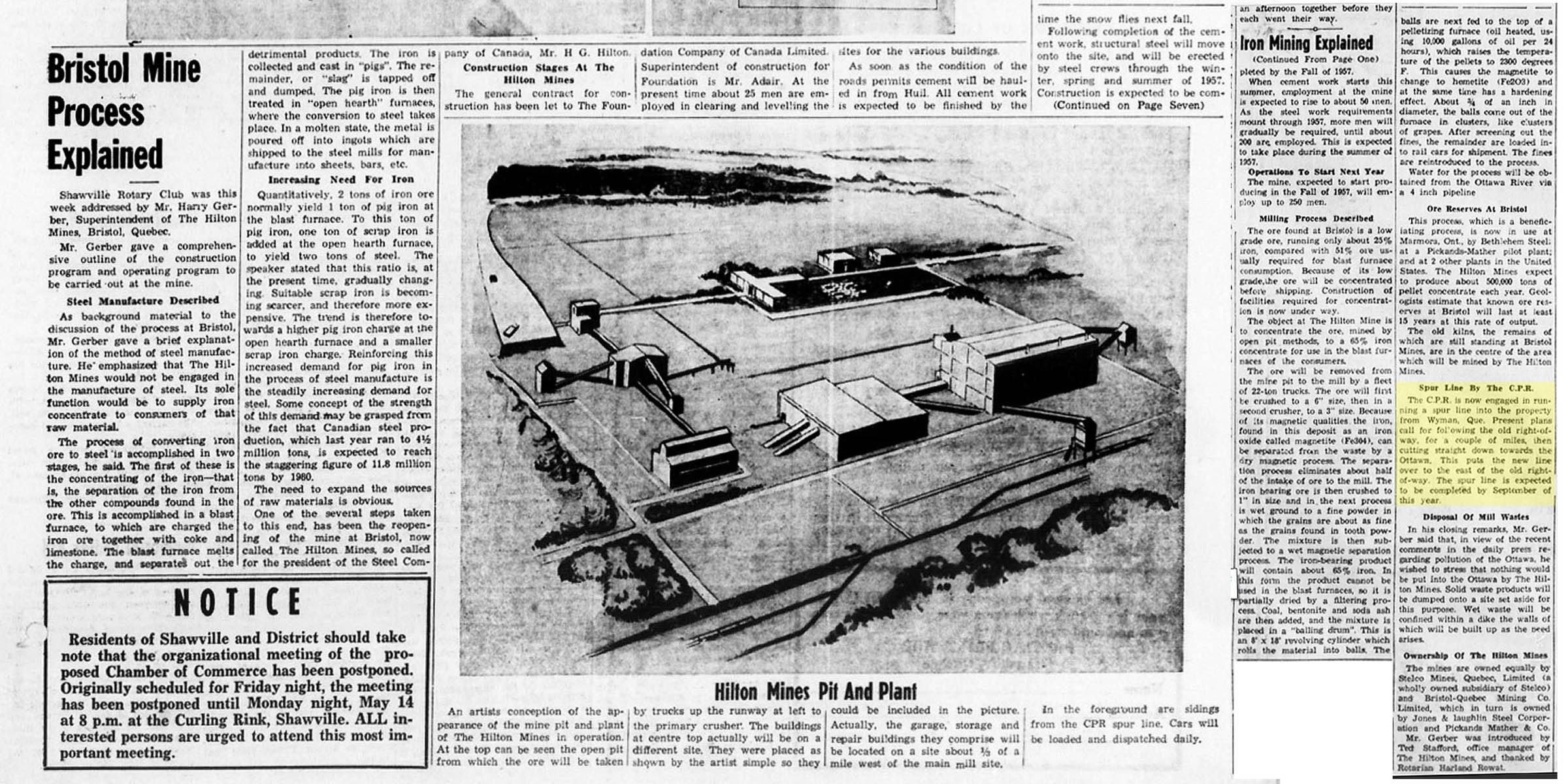 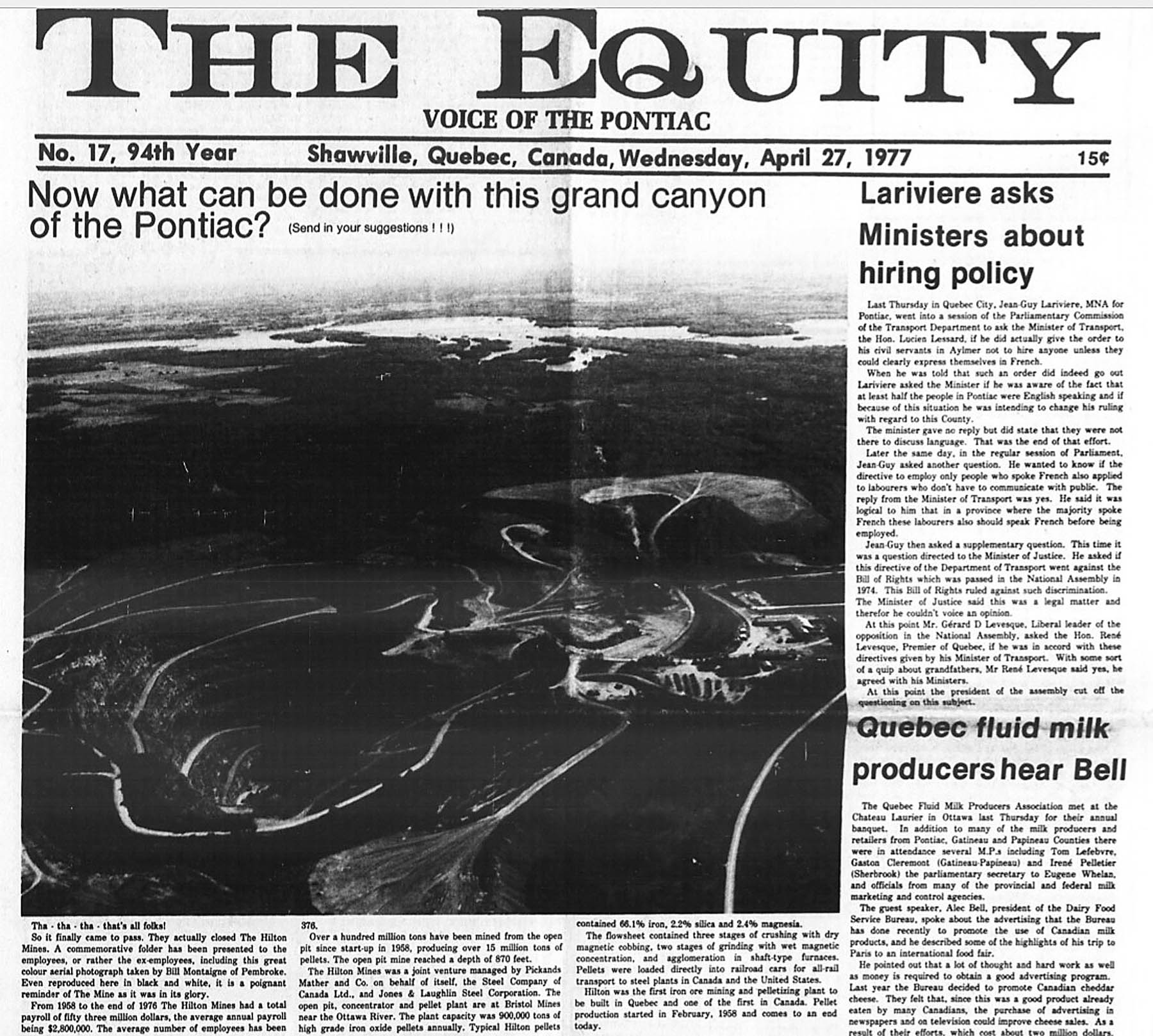 Shawville Equity 27 April 1977 The open pit, at the time of closure in 1976, had descended to the
870 foot level. By late-May 1977 water filled the
bottom 200 feet. 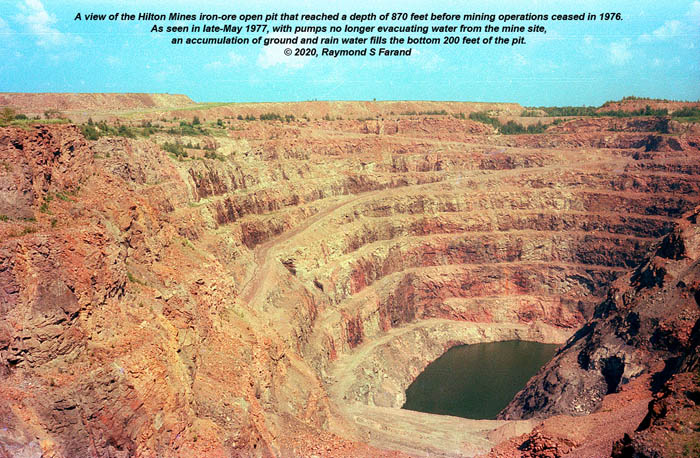 20 May 1977 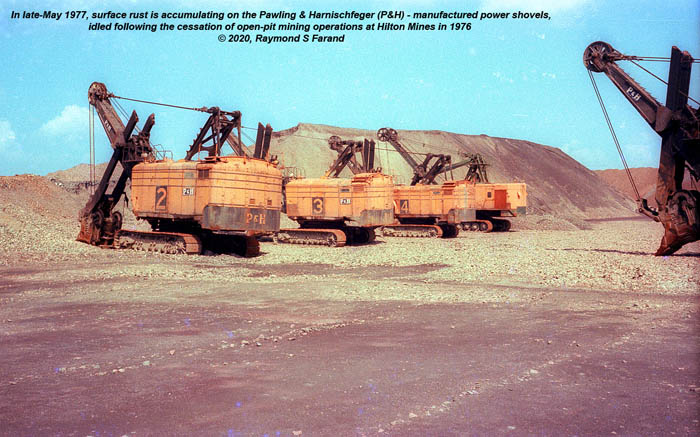 Power shovels May 1977 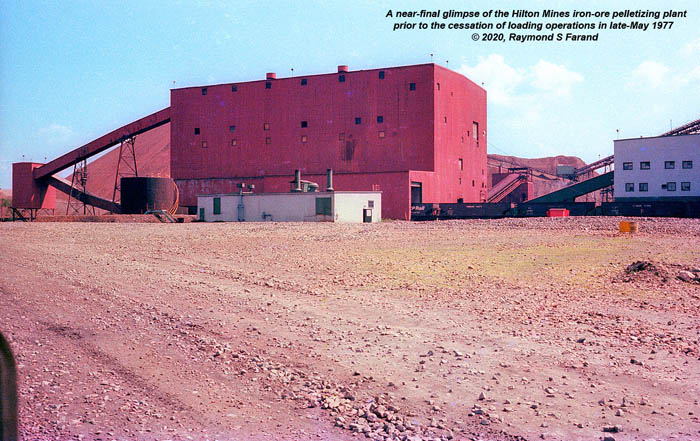 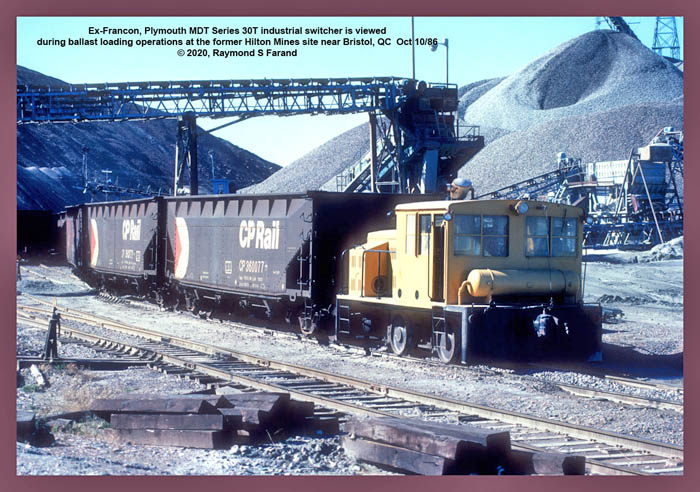 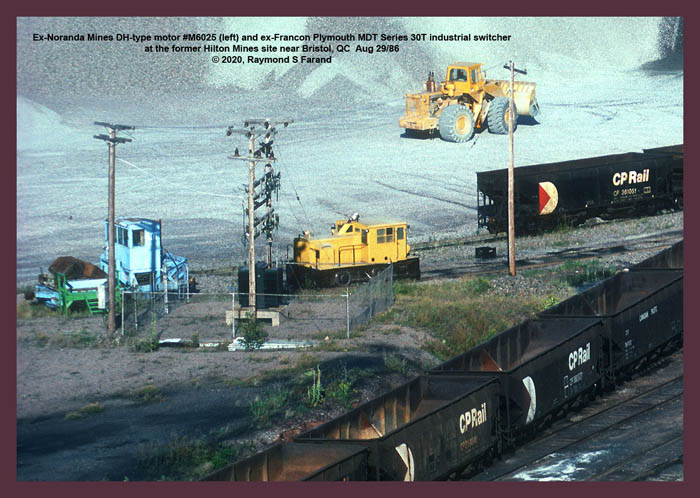 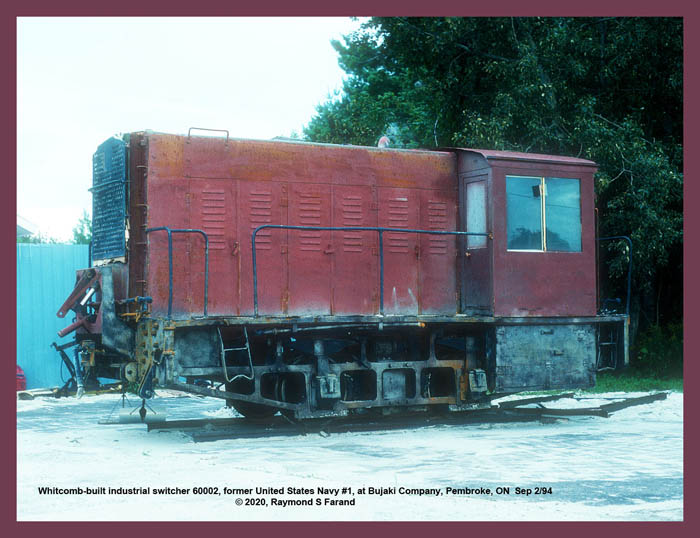 History Circle Trivial Pursuit An average rate of 900,000 tons of pellet concentrate per year, over 19 years of mine life, amounts to 17,100,000 tons of pellets moved by the CPR beginning 1958 through 1976 – the 6 months of 1977 excluded. A train consist report and an accompanying waybill (see highlighted attachments) dated October 12, 1970 indicate that a 359000-series CPR hopper with a LT WT (tare) of 23.2 tons, has when loaded, a GROSS WT of 101.7 tons, thus resulting in the NET WT of 78.5 tons attributed to the weight of the pellets. Note: The weight of the lading fluctuated from one car to the next at and around the 80 ton mark. Using a value of 80 tons per car as our benchmark, that equates to 213,750 rail car loads moving off the Waltham Subdivision over the span of 19 years. Sources indicate that mine train No. 52 regularly departed Hilton Mines with 40 loaded hopper cars, which translates into 5344 mine runs over the Waltham Subdivision from 1958 through 1976. If the clean-up runs in the final 6 months are added to the total, it means that the Waltham Subdivision hosted over 5500 mine trains during the time that iron-ore pellets were being shipped from Hilton Mines.  Ottawa CSC Consist Report 12Oct70 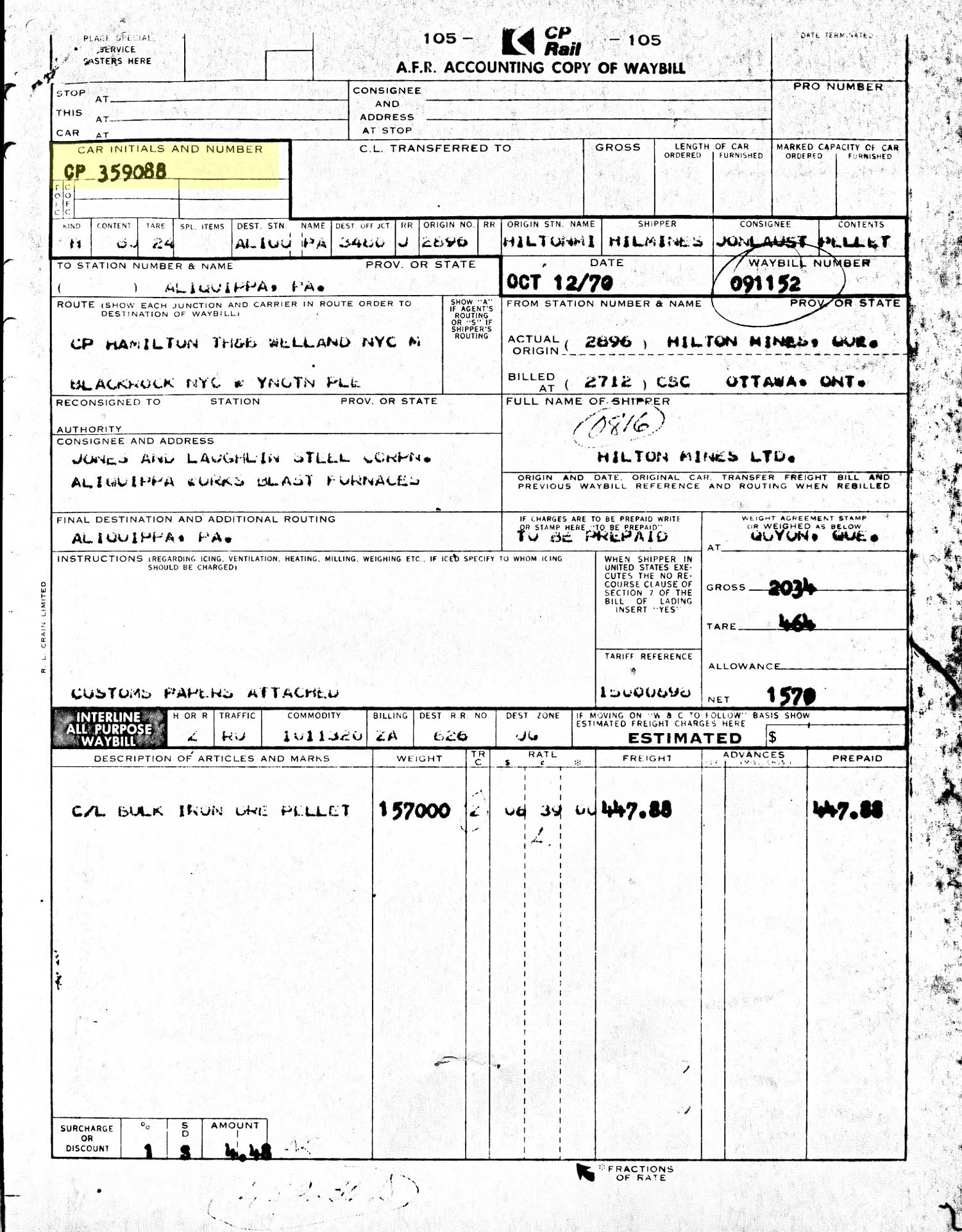 Waybill 091152, CP359088, 12Oct70 |
![]()
Updated 16 May 2020